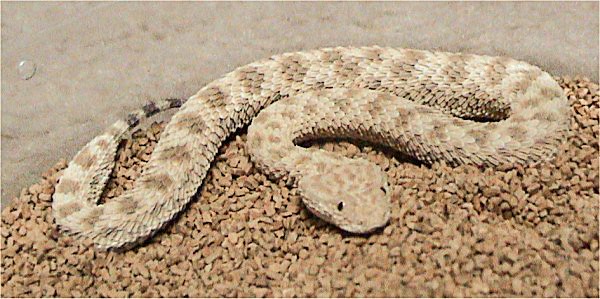Sahara sand viper
A species of Horned vipers Scientific name : Cerastes vipera Genus : Horned vipers
Sahara sand viper, A species of Horned vipers
Scientific name: Cerastes vipera
Genus: Horned vipers
Content
Description General Info
 , used under CC-BY-SA-2.5 /Cropped and compressed from original
, used under CC-BY-SA-2.5 /Cropped and compressed from original Description
Cerastes vipera, common names Sahara sand viper and Avicenna viper, is a venomous viper species endemic to the deserts of North Africa and the Sinai Peninsula. No subspecies are currently recognized.
General Info
Lifespan
5-15 years
Diet
Predominantly insectivorous, sahara sand viper feeds chiefly on locusts and beetles. Its diet occasionally extends to small rodents and reptiles, wherein it utilizes its venom to immobilize prey before consumption.
Appearance
Sahara sand viper is a small, chunky desert snake. Its body, covered with granular, keeled scales, is highly adapted for a sandy habitat. Usually light-colored with brownish crossbands, sahara sand viper beautifully camouflages in the desert. Two notable 'horns' above the eyes further differentiate it, these horns are actually extended supraocular scales. There's negligible size and color differentiation amongst genders and age groups.
Behavior
Sahara sand viper is a nocturnal, semi-fossorial species that buries itself in desert sand during the day, making it well-adapted to its arid habitats. Known for its 'sidewinding' locomotion style, it uses this technique to navigate loose sand. Solitary and territorial, this species shows aggression when defending its domain. It attracts prey by mimicking a worm with its tail, a unique form of aggressive mimicry.
Population
Stable
Scientific Classification
Phylum
Chordates Class
Reptiles Order
Lizards and snakes Family
Vipers Genus
Horned vipers Species
Sahara sand viper